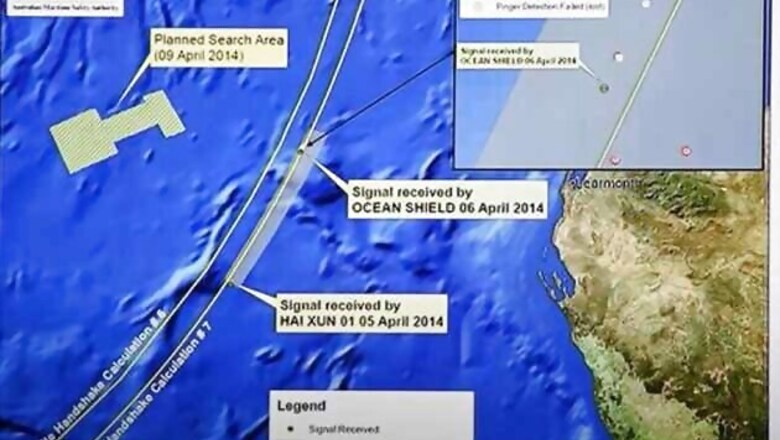
views
The search for a missing Malaysia Airlines jetliner resumed on Thursday with a renewed sense of optimism, after Australian officials said they had detected two new 'ping' signals that may have come from the plane's black box recorders.
The mystery of Malaysia Airlines Flight MH370, which disappeared more than a month ago, has sparked the most expensive search and rescue operation in aviation history, but concrete information has proven frustratingly illusive.
The announcement on Wednesday that two new 'ping' signals had been detected, bringing to four the number heard by a US Navy 'Towed Pinger Locator' (TPL), led officials to say they were confident that they were homing in on the remains of the plane.
"We are still a long way to go, but things are more positive than they were some time ago," Martin Dolan, chief commissioner of the Australian Transport Safety Board, which is involved in the search mission, told Reuters on Thursday.
The black boxes record cockpit data and may provide answers about what happened to the plane, which was carrying 227 passengers and 12 crew when it vanished on March 8 and flew thousands of kilometres off its Kuala Lumpur-to-Beijing route.
But the batteries in the black boxes have already reached the end of their 30-day expected life, making efforts to swiftly locate them on the murky ocean floor all the more critical.
Up to 10 military aircraft, four civil aircraft and 13 ships
are expected to be involved on Thursday with a massive search effort that has so far proven fruitless in identifying any physical evidence of wreckage from the flight.
Efforts are now focused on two areas - a larger one for aircraft and ships about 2,240 kms (1,392 miles) northwest of Perth and a smaller area about 600 kms (373 miles) closer to that city.
Based on data from the four signals detected, a modified Royal Australian Air Force P-3 Orion surveillance plane is deploying sonobuoys in the smaller search area to assist the U.S. Navy listening device that detected the signals.
Each of the 84 sonobuoys is equipped with a listening device called a hydrophone, which is dangled about 1,000 ft (305 metres) below the surface and is capable of transmitting data to search aircraft via radio signals.
"That does provide a lot of sensors in the vicinity of the Ocean Shield without having a ship there to produce the background noise," said Australian Navy Commodore Peter Leavy, operational head of the Australian search, referring to the ship carrying the U.S. listening device.
But experts say that the process of teasing out the signals from the cacophony of background noise in the sea is a slow and exhausting process. Operators must separate a ping lasting just 9.3 milliseconds - a tenth of the blink of a human eye - and repeated every 1.08 seconds from natural ocean sounds, as well as disturbances from search vessels.
An autonomous underwater vehicle named Bluefin-21 is also onboard the Ocean Shield, and it could be deployed to look for wreckage on the sea floor once the final search area has been positively identified.
As with so many things in this unprecedented search effort, experts say that will not be an easy task.
"Working near the bottom of the ocean is very challenging because this is uncharted territory; nobody has been down there before," Erik van Sebille, an oceanographer at the University of New South Wales, said.















Comments
0 comment